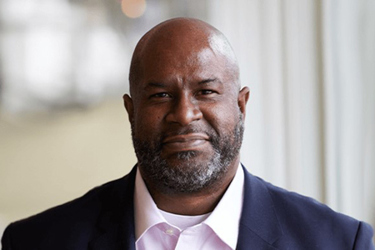AI Can't Help Bad ClinOps/Health Equity Data

By Dan Schell, Chief Editor, Clinical Leader

“Everywhere I look, there's a healthy set of data itching to be connected,” says Brian Johnson, Ph.D., VP, R&D Technology at Takeda. If you think about it, he’s right. Your doctor is entering data about you during your office visits. Insurance companies have been collecting data on you for years. Then there’s the scientists leveraging genomics data for research and for sites like 23andMe. There’s ePRO data from clinical trials, social media data … well, you get it. “We've gotten to the point where all of these datasets are mature but unrelated,” Johnson says. “If we can connect these data through technology, we could get a much richer picture of any person's health event, disease state, etc. So, I'm super excited about that.”
This concept of a wholly connected continuum of data, especially as it relates to clinical trials, isn’t new. And I’m guessing you already know why we haven’t seen it come to fruition — it would cost a lot and take ton of manual labor. Let’s say, for example, you wanted to connect a person’s EMR, social media, and clinical data. In recent years, you would need to hire experts in each of those datasets to pore through everything trying to find ways to make disparate data points relate to each other. Sure, connecting all that data together would yield a tremendous amount of value, but the cost investment would almost equal the value you received. “And you wouldn't necessarily be sure that every question you're asking [about how to connect the data] is going to get you a good answer,” Johnson says. “But I’m positive that every one of those questions is going to cost me a lot of money and time.”
Johnson says generative AI is changing all of that, but there are adjustments that need to be made before reaping its cost and time savings. For instance, for the AI to work most effectively, it has to understand the relationships of the disparate data sources (e.g., commercial, quality, regulatory). Thus, the more work you can do ahead of time in making those relationships as logical and uniform as possible, the better the AI is going to perform. There’s also the issue of learning how to best interrogate the AI to get the results you want. For that, you’re going to want to invest in hiring (or training) prompt engineers. “They listen to the complex questions that scientists, clinicians, and regulatory personnel struggle with and translate those into prompts for the AI that will yield the answers we need,” says Johnson. “For example, with generative AI, I may be able to better understand why a regulatory body is asking a question and then give a better answer. Or better yet, I might be able to anticipate what their questions will be based on the data that I've sent and already be ready with an answer.”
IMPROVING HEALTH EQUITY NEEDS TO BE PART OF THE PLAN
As much as Johnson believes in the transformative power of AI being used in ClinOps, he’s also cautious in promoting its use because of the current healthcare equity gap. “Our datasets on people of color are so low, and the quality of them is so questionable, I'm really concerned that the gap is going to get wider,” he says. “After all, the AI is only as good as the data we have.”
That emphasis on improving health equity has become a separate part of his job at Takeda where he identifies startups that focus on ways to drive more inclusion access and better datasets. One example is Acclinate, which focuses on educating people of color to the value of clinical trials way before the trials happen. (See also, “Can Data Help Improve Diversity In Clinical Trials?”) Another example is Inside Edge Consulting in New Jersey. “They have been working in the community for the last 20 years trying to drive better access to clinical trials,” Johnson says. “So, they have 20 years’ worth of data that show who's a trustmaker, who's a good participant, what is a ‘good’ site, all those sorts of things. So, we're looking for ways to institutionalize that knowledge and bring those kinds of capabilities to bear, because if we don't, then we're going to miss the boat on not only narrowing that healthcare equity gap but leveraging the advantages of generative AI in the clinical process.”
